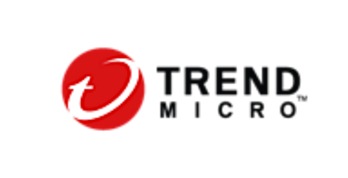September 20, 2022
Use Cloud Patterns to Simplify and Secure Multicloud Environments
Standard procedures and governance reduce the risks and inefficiencies of one-off deployments.
Diversification has become a guiding principle for multicloud environments, just as it is for financial investments. You don’t want to put all your eggs in one basket. Yet when organizations work in multiple cloud environments, they need to establish an overarching framework to guide them all. This is important for strengthening cybersecurity, reducing administrative burdens and creating an environment that doesn’t require IT professionals to be fluent in every possible cloud environment.
Such a framework consists of cloud patterns and practices, a concept that includes enterprise standards, reference architecture, deployment agility, governance framework and security. The value that patterns offer the modern IT enterprise is that these artifacts are not bound to a particular product or place. By design, they are platform-agnostic practices that bring maximum agility to industries all around the globe.
How can organizations get started in this endeavor? A great place to begin is with a healthy, functional cloud center of excellence. The CCoE structure provides a natural breeding ground for the innovative ideation and cross-functional collaboration required to generate a “first pass” of the framework. These models are valuable for organizations that are dealing with cloud sprawl or that need to deliberately adopt a variety of clouds for business or technology reasons.
Developing an overarching framework is about zooming out from individual workloads or business needs related to a specific cloud and instead asking what the organization’s goals are, and which patterns and tools would best support them.
If your organization doesn’t have a CCoE or even a reference architecture framework, CDW’s Digital Velocity group can help get it headed in the right direction quickly.
Develop Cloud Patterns That Support Business Strategies and Outcomes
People often think of the cloud as a place to migrate workloads and data. But when we approach the cloud that way, each workload can become a one-off initiative. You’re doing something different every time you go out there.
A better approach is to think of the cloud as a series of patterns that must tie back to a business strategy and outcome. Those patterns — for deployments, operations, security and governance — should apply to all your cloud presences. This means you must establish a tactical set of standard operating procedures, coding practices, naming conventions, and other operational and development standards.
The process starts with identifying the patterns that work for your enterprise, getting them approved, and then socializing and enforcing the use of those patterns. Steering away from anti-patterns, or one-offs, is equally important. Everyone should be working from the same agreed-upon manifesto and using stored patterns that are easily accessible.
One effective tool for creating this type of consistency is HashiCorp’s Terraform, a human-readable language for infrastructure as code (IaC). Developing in Terraform enables a consistent multicloud approach, which delivers significant efficiency gains. With Terraform, your hands-on keyboard work will require fewer cycles to manage across individual cloud providers than using cloud-native IAC.
Address IT Staffing Gaps with IaC Tools
Tools such as Terraform offer several advantages for organizations seeking to improve their overall multicloud management.
One significant benefit relates to talent acquisition. Terraform significantly reduces the complexity of working within multiple cloud environments. For instance, each public cloud provider has its own deployment and management service, such as Azure Resource Manager or Amazon Web Services CloudFormation. Each template is different, and finding someone who knows multiple native cloud languages is challenging.
Terraform simplifies the process by providing an enterprise IaC pattern that is cloud-agnostic. This means IT staffers don’t have to know every public cloud provider’s syntax language and templates. Moving to a different cloud is then just a matter of changing the provider variable. That makes it much easier to operate a multicloud environment because your engineers have only one language to learn.
Optimizing a multicloud environment calls for simplification, and patterns are an excellent place to start. They help to minimize the staffing demands, inefficiencies and vulnerabilities that frequently occur with one-offs — and they do so without requiring teams to reinvent the wheel with each cloud migration.
Story by Joshua Corbett, a cloud-native guru, DevOps fanatic, and Innovative thought leader with 20 years of data center technologies and cloud native systems experience across Healthcare, Financial, Industrial and Legal verticals.
He led the Tiger Team for tactical infrastructure and DevOps integrations for nine acquisitions across 17 Industrial Manufacturing and Distribution companies over 4 years.
In the first 15 months, he reduced company onboarding/integration TMM from 6-9 months to 60-90 days for critical IT services (Identity/Authentication, WAN/LAN, VoIP, Email and ERP).
In 2017, he built a Microsoft Gold Certified Azure Cloud and Migration practice using a $10K investment that grew to $350K in annual business Revenue within 18 months and $100K RTM in Azure consumption.
After multiple years of 400% year-over-year growth, in 2019 the as your practice would be sold as part of a larger acquisition to a regional MSP.

